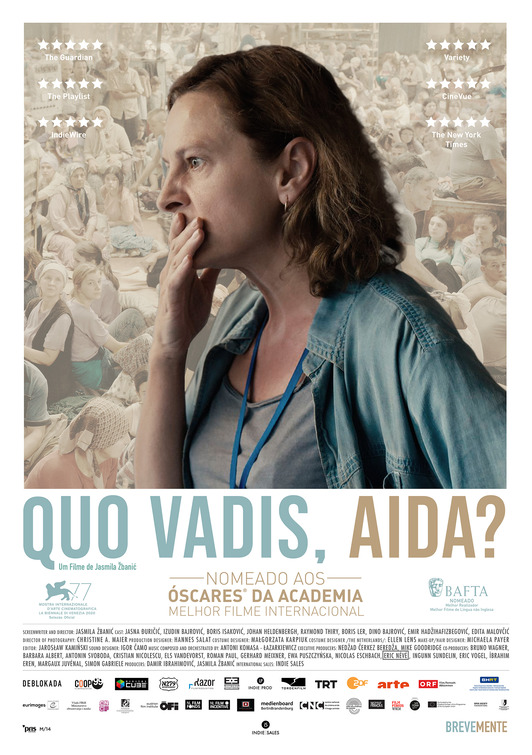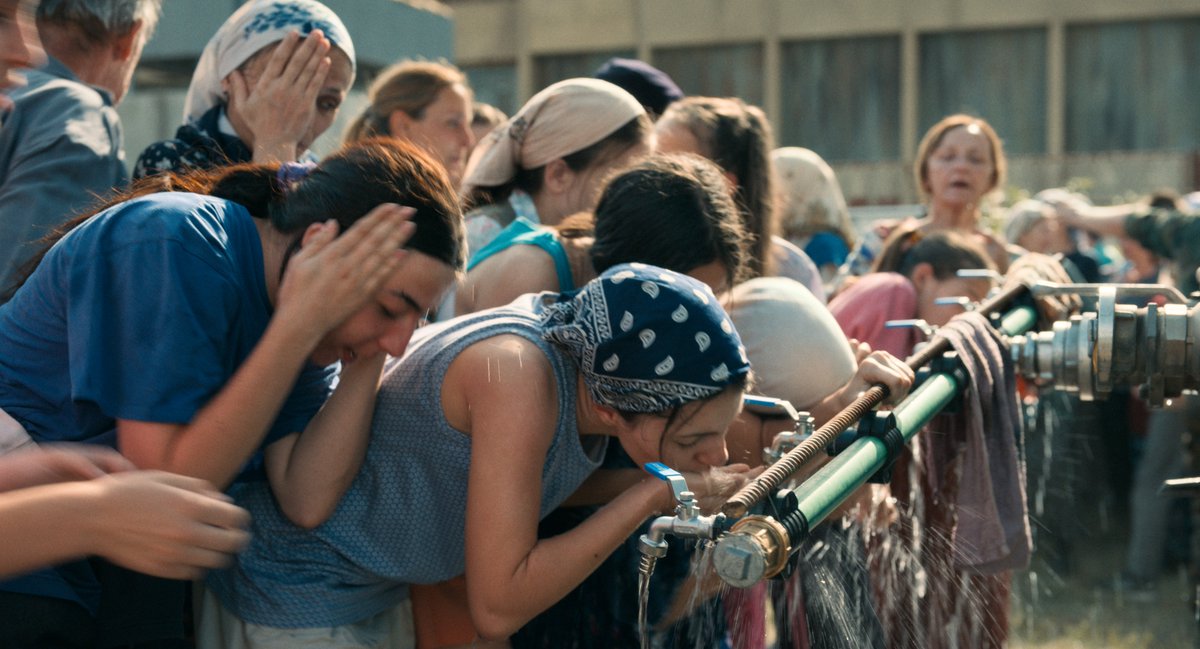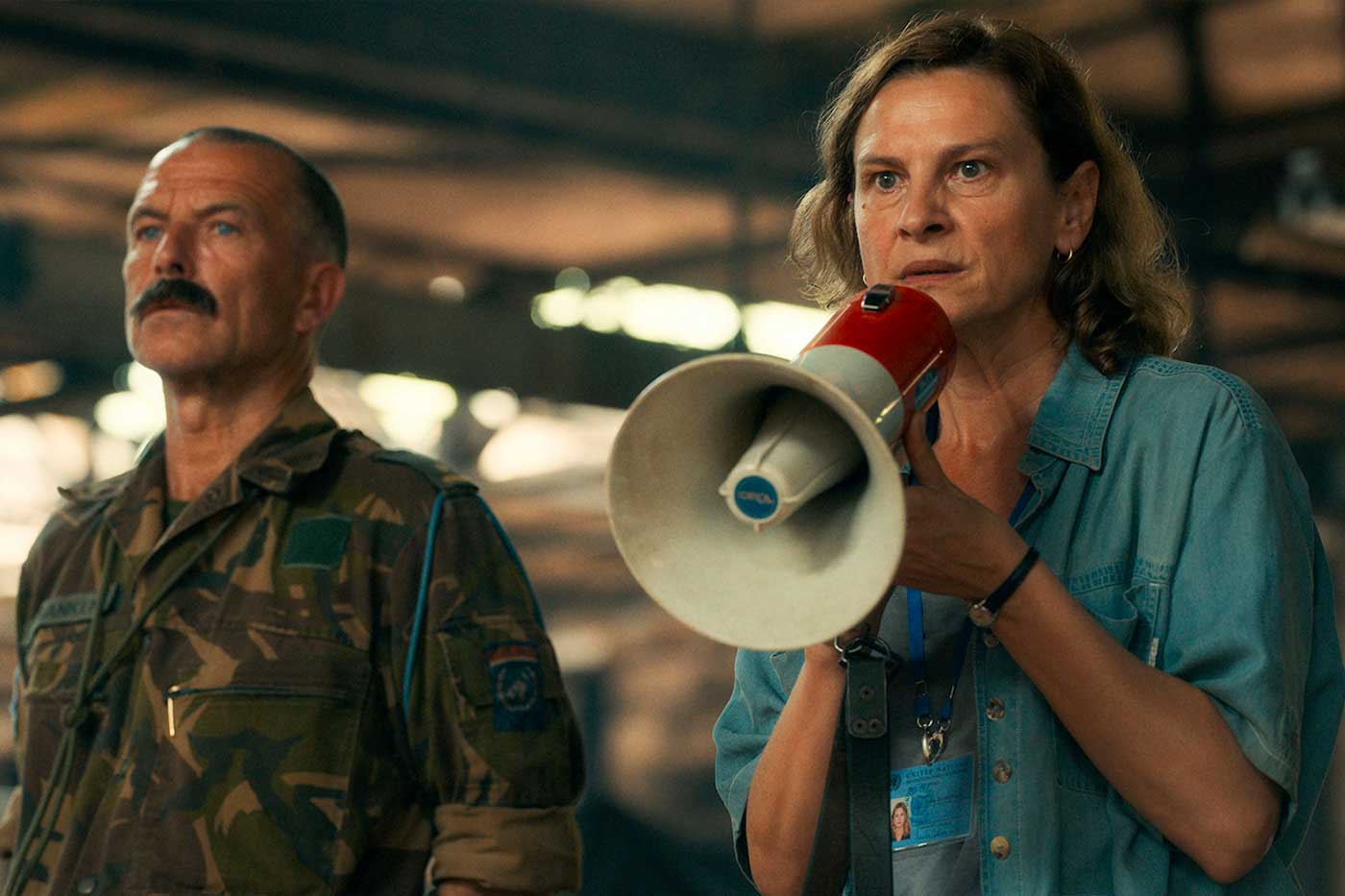Hello everyone! First of all, happy new year and best wishes for everyone in 2022 :)
Today, I'll be reviewing a movie that impressed me deeply. The movie can be hard to watch due to the issues it adresses, but I believe it is a great art piece that everyone should watch.
Quo vadis, Aida?
Aida is a translator for the UN in the small town of Srebrenica. When the Serbian army takes over the town, her family is among the thousands of citizens looking for shelter in the UN camp.
IMDB

The final appeal of Ratko Mladić, known as the Butcher of Bosnia and responsible for the Srebrenica massacre, to the court in the Hague on 8 June was also rejected. Thus, it became certain that he would remain in prison for the rest of his life, together with Radovan Karadžić, one of the chief responsibles of the genocide. So how was a civil war full of massacres and genocide allowed in the heart of Europe, under the power of the United Nations, 50 years after the Second World War?
Of course, it is not a movie that sets out to answer this question, but the answer to the question is also hidden in the movie. If you had a chance to see documentaries such as The Death of Yugoslavia, the idea that such a massacre cannot happen in an age where it is possible to document it visually is erased from your mind. There are massacres like this all over the world, but the fact that it is in the heart of Europe shows how helpless and dysfunctional institutions such as the "West" and the "United Nations" are.

"Quo vadis, Aida?" focuses on the story of a primary school teacher who works as a translator at the Dutch UN force based in Srebrenica, which is declared a safe zone by the United Nations. Srebrenica is under siege and the entry of Serbian forces into the city is blocked by an ultimatum by the UN. However, when the army commanded by Mladić enters the city, the expected air strikes does not happen and Bosnian Muslims flock to the UN base. While a group of three-four thousand people is taken to the base, the rest are left defenseless around the base. With the silence of European countries and the UN, civilian Bosnians and a handful of Dutch soldiers are left to their fate. Here in the movie, we watch Aida, our translator, throughout the process leading up to the events in which more than eight thousand Bosnian men were murdered. Aida is aware of the inevitable end and tries to use the limited power in her hands to save her family. She barely makes her two sons and her husband into the base with great effort, but her attempts to portray them as UN employees turns out to be futile.

Forgiveness, Reconciliation and Adjusting for the Future
Throughout the film, Aida swings back and forth between the military administration, the doctors, her relatives and acquaintances, her family, and her own past. Not only mentally, but physically, Aida is constantly moving from place to place. Running helplessly from here to there, Aida struggles to ensure that all the hustle and bustle was not in vain. However, the guardians of civilization will once again act blindfolded to the ravaged fascism to grow and flourish in Europe and devour everything in its path. It is not possible to say that the popular anti-immigrant view is different today. However, in the midst of all these structural problems and the reality of genocide, there is a woman who is divided into a thousand pieces and tries to use the power she has to save her family by overstating it. It tells the story of a woman who tries to take control of her own destiny in the midst of all the brutality that has ensued, and is actually trying to save the ones she love. In addition, there are very small stories and side characters that are finely processed. Like the UN doctor going from one war to the other, the Jewish military driver who attacked a Dutch soldier who ratted out a man dressed as a woman to the Serbs and watched the whole thing with fearful eyes, or the Serbian soldier who was a student of Aida...
The next part of the review may contain spoilers.

Despite everything that has happened, "Quo vadis, Aida?" is a movie that surprisingly tries to distance itself from pessimism. Returning to her home in a Serbian neighborhood after the war and starting to teach in Srebrenica, Aida also becomes the teacher of the children of war criminals. Director Jasmila Žbanić underlines the necessity of learning to live together somehow. The characters in the graphic novel Joe Sacco wrote about Goražde, another “safe” area that barely survived a similar end to Srebrenica, describe how they laughed at their grandparents who told them not to trust the Serbs by describing what happened during the Second World War. But even Tito's iron fist wasn't enough to root out nationalism. At this point, Aida seems to show forgiveness, reconciliation and getting used to it as the only way. This generation will end and future generations will come. Aida is taking a step that she can take so that future generations are not affected by the same poison. That's why " Quo vadis, Aida?" It's not a gloomy movie. " Quo vadis, Aida?" Definitely one of the best movies ever made on Bosnia.
Thanks for checking out my review :)